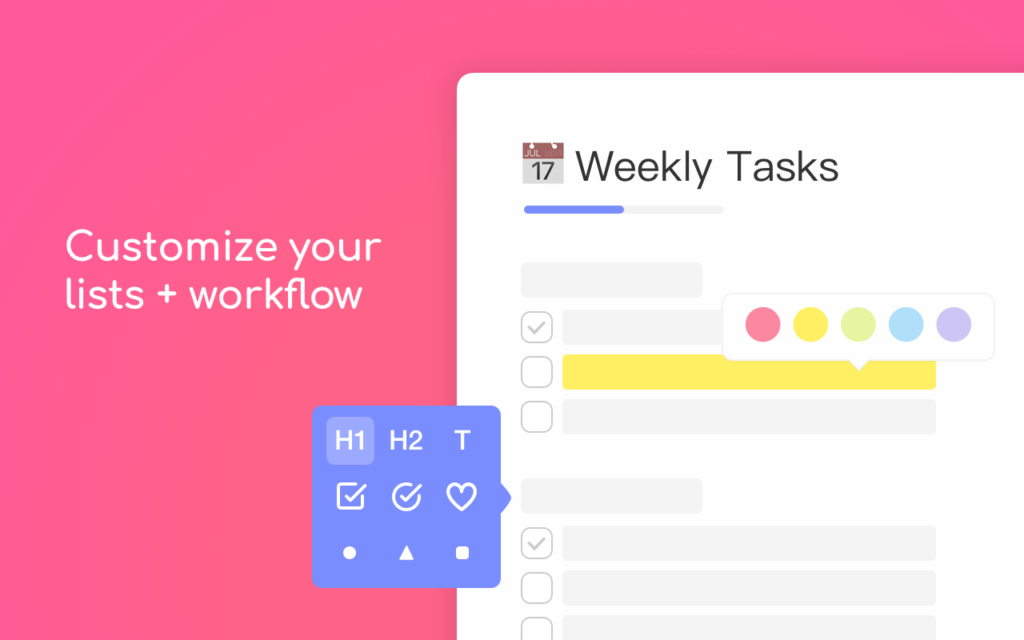
This article was created in partnership with Mekanism. Thank you for supporting the partners who make SitePoint possible.
Black Friday is one of the best opportunities of the year to get all kinds of new stuff, including digital web tools and services. Some companies are offering huge discounts to heavily increase their sales, while others already have excellent offers for their customers and partners.
In this article, you’ll find free and premium web tools and services, and also some of the best Black Friday WordPress deals. We included website builders, UI Kits, Admins themes, WordPress themes, effective logo and brand identity creators, and much more. There’s a web tool or service for everyone in this showcase of 38 excellent solutions.
Let’s start.

DashboardPack is one of the main suppliers of free and premium Bootstrap 4 admin themes and UI kits, being used by tens of thousands of people with great success. Here you’ll find free and premium themes, made with great attention to detail — HTML5 themes, React themes, Angular themes, and Vue themes.
On the DashboardPack website there’s a dedicated section of Freebies. Here there are four gorgeous dashboard themes (HTML, Angular, Vue, and React) that you can see as a live demo and use for free.
Between November 29 and December 3, you have 50% discount for all templates and all license types (Personal, Developer, and Lifetime). Use this coupon code: MADBF50.

Total Theme is a super powerful and complete WordPress theme that is flexible, easy to use and customize. It has brilliant designs included, and other cool stuff.
With over 38k happy users, Total Theme is a popular WordPress theme. It comes loaded with over 80 builder modules, over 40 premade demos that can be installed with 1-click, 500 styling options, and a friendly and lightning-fast interface.
The premade demos cover niches like Business, One Page, Portfolio, Personal, Creative, Shop, Blog, Photography, and more. Total Theme will help you achieve pretty much any goal — from scratch using the included Visual Page Builder, or by editing a demo design.
A limited-time 50% off Total Theme offer is valid from November 26 2019 (12pm AEDT) through December 3 2019 (8pm AEDT). Discount already applied.

Imagine if your dream business idea had a name, a face, and branded documents that made it official. With Tailor Brands’ online logo maker and design tools, you can instantly turn that dream idea into a living, breathing company! Design a logo in 30 seconds, customize it to your liking, and put it on everything — from professional business cards to online presentations.
Tailor Brand’s mission is to be the biggest branding agency powered by AI. It’s a huge goal but it is achievable, and they already have a top position on this ladder.
Designing a logo with Tailor Brands is super simple and you don’t need any special skills or previous experience to get a top logo design. You write the logo name you like, add a tagline (optional step), indicate which industry is your logo is for, choose if you want an icon-, name- or initial-based logo, choose from left and right (you’ll get designs as examples), and the powerful AI will present you plenty of logo designs to choose from. It’s super simple and straightforward.
Go ahead and design a logo with Tailor Brands.

Bonsai is the integrated suite of products used by the world’s best creative freelancers.
With the latest addition of freelance taxes to the product lineup, Bonsai is more prepared than ever to help with everything your freelance business needs.
Be prepared for tax season and spend just seconds getting an overview of what you owe in annual or quarterly taxes.
Bonsai’s freelance tax software looks at your expenses, automatically categorizes them, and highlights which are deductible and to what percentage.
All Bonsai products are deeply integrated with each other to ensure it can fit every work style. Other features you should know about include contracts, proposals, time-tracking, and invoicing.
Start your free trial of Bonsai today and be ready for your freelance taxes ahead of time!

Codester is a huge marketplace where web designers and developers can find thousands of premium scripts, codes, app templates, themes (of all kinds), plugins, graphics, and much more. Always check the Flash Sale section where hugely discounted items are being sold.

With over eight years of experience, this App and Browser Testing service is powerful, easy to use and provides you with a big number of features tailored to help you improve your product. Use TestingBot for automated web and app testing, for live web and app testing, for visual testing, and much more.
Start a free, 14-day trial, no credit card required.

The leading choice for creative professionals, FunctionFox gives you simple yet powerful time-tracking and project-management tools that allow you to keep multiple projects on track, forecast workloads, reduce communication breakdowns and stay on top of deadlines through project scheduling, task-based assignments, internal communication tools and comprehensive reporting. Don't let deadlines and due dates slip past!
Try a free demo today at FunctionFox.

Taskade is a unified workspace where you can chat, write, and get work done with your team. Edit projects in real time. Chat and video conference on the same page. Keep track of tasks across multiple teams and workspaces. Plan, manage, and visualize projects. And much more.
With Taskade, you can build your own workspace templates. You can start from a blank page or you can choose between a Weekly Planner, Meeting Agenda, Project Board, Mindmap, and more (you'll find lots of templates to start with). Everything you need can be fully configured to be a perfect fit.

AppyPie is a professional and super-easy-to-use Live Chat solution that will help you reach out to your clients and offer them real-time responsive and support through your website and mobile, using the platform live chat software.
This is a brilliant way to quickly increase conversions, make more sales (you can answer questions from people that want to buy), and increase the level of happiness of your customers. (Whatever problem they may have, they know that you're there to help fast.)
Request an invite to test the platform.

Mobirise is arguably the best website builder in 2019, which you can use to create fast, responsive, and Google-friendly websites in minutes, with zero coding, and only drag-and-drop.
This brilliant builder is loaded with over 2,000 awesome website templates to start with, with eCommerce and Shopping Cart, sliders, galleries, forms, popups, icons, and much more.
In this period there is a 94% discount, so take it.

MailMunch is a powerful drag-and-drop builder that's loaded with tons of beautiful, pre-designed newsletter templates, with advanced features like Template Blocks and a Media Library to make the workflow even smoother, and a lot more. There's no coding required to use MailMunch.
Start boosting your conversions with MailMunch.

Elementor is the most powerful website builder on the market, being used by millions of people with great success. To get out of the crowd, you can supercharge Elementor with 100+ free and premium templates, by using this bundle.
Free to use.

Creating a schema markup is no longer a task! With a simple click and select interface you can set up a markup in minutes. All the markup configurations you will set are automatically applied to all selected pages and posts.
Get Schema Pro and outperform your competitors in search engines.

Rank Math is the most powerful and easy-to-use WordPress SEO plugin on the market, making your website rank higher in search engines in no time. After a quick installation and setup, Rank Math SEO does the whole the job with no supervision.
The post Black Friday 2019 for Designers and Developers appeared first on SitePoint.























